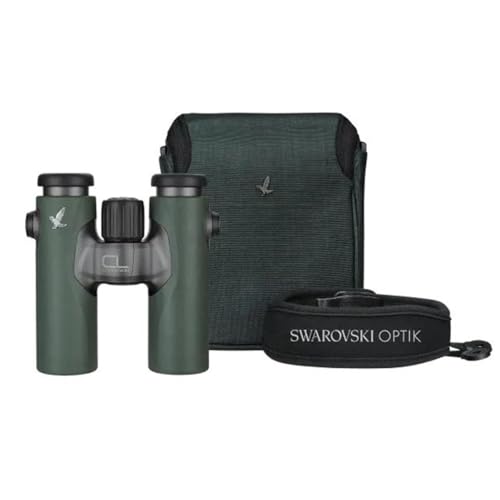Binocular Field of View: A Practical Guide [2024]
Binocular Field of View can make a world of a difference when it comes to long distance viewing experience. A wider binocular field of view, for example, can make the scene from the top of the mountain mesmerizing, to say the least.
In this blog post, I shall discuss about the importance of the binocular field of view and its relationship with binocular magnification. Field of view is an important binocular number and you need to keep it on your list when shopping for a new pair of binoculars.
This site participates in the Amazon Services LLC Associates Program designed to give sites like ours a way to earn advertising fees by linking to products on Amazon.com at no additional cost to you. I appreciate your support. Thank you!
What is Binocular Field of View?
The binocular field of view is the width of the area that you can see when looking through a pair of binoculars. Field of view is, essentially, the extent of your peripheral vision while using the binoculars.
A wider field of view allows you to observe a larger portion of the scenery without having to move your binoculars around. On the other hand, a narrower field of view lets you concentrate on a specific object, such as a bird nest, without the surrounding distractions.
Measuring Field of View
Field of view is typically measured in two ways: linear field of view and angular field of view.
Linear field of view is expressed in feet or meters and represents the width of the observed area at a specific distance.
On the other hand, angular field of view is measured in degrees and indicates the extent of the observed area within your field of vision.

The schematic, courtesy NIKON, is a visual explanation of Binocular Field of View (FOV) and its relation to Binocular Magnification.
Benefits of a Wider Field of View
A wider field of view can improve your overall viewing experience:
- Improved Situational Awareness: With a wider field of view, you can observe a larger area at once, making it easier to spot objects or subjects of interest. This is especially useful when enjoying scenic views from elevated locations.
- Easier Tracking: When observing fast-moving subjects like birds in flight, galloping zebras or a basketball game, a wider field of view allows for smoother tracking of movement.
- Enhanced Immersion: A wider field of view enhances the feeling of immersion in the scene, allowing you to fully engage with the environment you’re observing.
Comparing Field of View
To help you understand the differences in field of view among various binoculars, let’s take a look at a comparison table using real-life examples:
| Binocular Model | Linear Field of View | Angular Field of View |
|---|---|---|
| Nikon Monarch M7 8×30 | 435 ft at 1000 yds | 8.3 degrees |
| Nikon Monarch M7 10×42 | 362 ft at 1000 yds | 6.9 degrees |
| Nikon Monarch M5 12×42 | 267 ft at 1000 yds | 5.1 degrees |
You may spot a trend here. Typically, higher binocular magnification may require manufacturers to reduce the binocular field of view (FOV).
Some Models with High Binocular Field of View
Factors Affecting Binocular Field of View
This brings me to the question of what factors affect Binocular Field of View (FOV)? There are 3 key factors:
1. Binocular Magnification
Binocular Magnification plays a significant role in determining the field of view. Higher magnification tends to narrow the field of view, while lower magnification provides a wider view.
For example, binoculars with a magnification of 10x will typically have a narrower field of view compared to binoculars with a magnification of 8x. This is demonstrated in the table above.
Striking the right balance between binocular magnification and binocular field of view, really depends on your specific needs.
If you require greater detail and zooming capabilities for activities like birdwatching or wildlife research, then higher magnification is preferable. However, if you prioritize a broader perspective to capture landscapes or fast-moving subjects, lower magnification but wider field of view is ideal.
2. Lens Diameter
The lens diameter (aka objective lens size), typically expressed in millimeters, is another factor influencing the field of view.
A larger lens diameter allows more light to enter the binoculars, resulting in a wider field of view. This is because a larger lens captures a greater area of the scene, leading to a broader view.
For instance, let’s consider two binoculars with different lens diameters but same magnification: one with a 42mm lens and another with a 32mm lens. The binoculars with the larger lens diameter will likely have a wider field of view, enabling you to observe more of the environment.
3. Optical Design
The optical design of binoculars also affects the field of view. Manufacturers employ various optical configurations, such as porro prism or roof prism systems, to achieve different field of view characteristics.
Porro prism binoculars, with their offset eyepiece design, often provide a wider field of view compared to roof prism binoculars. However, advancements in roof prism technology have led to the development of binoculars that offer both compact designs and wide fields of view.
When choosing binoculars, consider the optical design and determine if a wider field of view aligns with your needs and preferences.
Binocular Field of View vs Binocular Magnification
When buying binoculars, two important factors to consider are the field of view and magnification. Along with the optical lens size, they significantly impact your viewing experience.
Binocular Field of View
Field of view pertains to the observable area through the binoculars at a specific distance, typically measured in degrees or feet at a distance of 1,000 yards.
A wider field of view allows for the observation of a larger area, making it ideal for activities such as landscape viewing or hunting terrain scouting.
Binocular Magnification
Binocular magnification refers to how much larger an object appears when viewed through the binoculars, denoted by a number followed by “X.” For instance, 10X magnification means objects appear ten times larger than they do to the naked eye.
Higher magnification is beneficial for tasks requiring detailed observation, such as wildlife research or astronomy.
The Trade-Off: Field of View vs Magnification
However, there’s always a trade-off between field of view and magnification.
As magnification increases, the field of view decreases due to optical limitations. Conversely, binoculars with wider fields of view typically have lower magnification levels.
Achieving the right balance between the two is crucial for optimal viewing. The chart below is self explanatory.

To better understand this trade-off, let’s consider an example. Suppose you are in the market for a pair of binoculars to observe migrating birds in flight. You come across two options:
- Option A offers 8x magnification with a wide field of view of 430 feet at 1,000 yards.
- Option B provides 12x magnification but sacrifices the field of view, offering only 280 feet at 1,000 yards.
While Option B may seem tempting with its higher magnification, the lower binocular field of view limits your ability to track the birds. Option A, on the other hand, strikes a better balance by providing a wider field of view, allowing you to track the migratory birds more easily and follow their movements effortlessly.
Now, let us say you are more interested in studying how birds feed their young in the nest. In this case Option B, with higher binocular magnification will be a much better option, as you can make a more detailed observation.
Best Binocular Field of View for Different Activities
Here are some guidelines for the best binocular field of view for some common activities:
| Activity | Suggested Magnification | Objective Lens Diameter | Field of View |
|---|---|---|---|
| Birdwatching | 8x – 10x | 30mm – 42mm | 350ft – 430ft at 1000 yards |
| Wildlife Observation | 8x – 10x | 32mm – 42mm | 330ft – 410ft at 1000 yards |
| Astronomy | 12x – 20x | 50mm – 100mm | 280ft – 350ft at 1000 yards |
| Hunting | 8x – 10x | 42mm – 50mm | 300ft – 380ft at 1000 yards |
| Nature Hiking | 8x | 32mm – 42mm | 360ft – 430ft at 1000 yards |
| Marine Observation | 7x – 10x | 30mm – 50mm | 350ft – 420ft at 1000 yards |
| Sports Events | 7x – 8x | 25mm – 32mm | 350ft – 420ft at 1000 yards |
| Concerts/Theater | 7x | 25mm – 30mm | 400ft – 450ft at 1000 yards |
| Sightseeing/Tourism | 8x | 32mm – 42mm | 360ft – 430ft at 1000 yards |
| Stargazing | 12x – 15x | 50mm – 70mm | 280ft – 350ft at 1000 yards |
Birdwatching
Birdwatching is a popular hobby and bird watching enthusiasts can range from absolute beginners to real experts, researchers and chroniclers. The needs at different levels will differ.
A novice birdwatcher should start off with a binocular with a high field of view and a modest magnification such as a Nikon Monarch M7 8×30. They can use it to view birds in flight. The magnification is good enough for observing larger birds, such as eagles or water fowl.
As you get more and more engrossed in your passion you may buy a second pair for more detailed observation. Nikon Monarch M7 10×42, with its 10X magnification will be a good addition to your binocular collection.
Astronomy & Stargazing
Just as birdwatchers, stargazing enthusiasts, start off as beginners. At this stage of your journey in to the wonders of our amazing universe, a binocular with a wide field of view will help you appreciate the panorama of the night sky.
As your interest grows and you want to specialize in finding out more details about a closer celestial object, such as the moon, you may want to get a pair of binoculars with a higher magnification level.
Celestron – SkyMaster Pro 20×80, with 20X magnification, large 80mm objective lenses, BaK-4 prisms, and fully multi-coated optics, offers a view that is second to none. Notably its FOV is just 3.2°.
Watching Sports Events
When it comes to sports events, a wider field of view can help you keep track of the action on the field or track. A field of view between 5 and 8 degrees is typically the best for sports observation.
I recommend Nikon Monarch M7 8×30 for watching spectator sports such as football or basketball. The Monarch M7 8×30 is fitted with top-notch installations and attachments enabling you to use the binocular at any time. It is compact and lightweight too!













